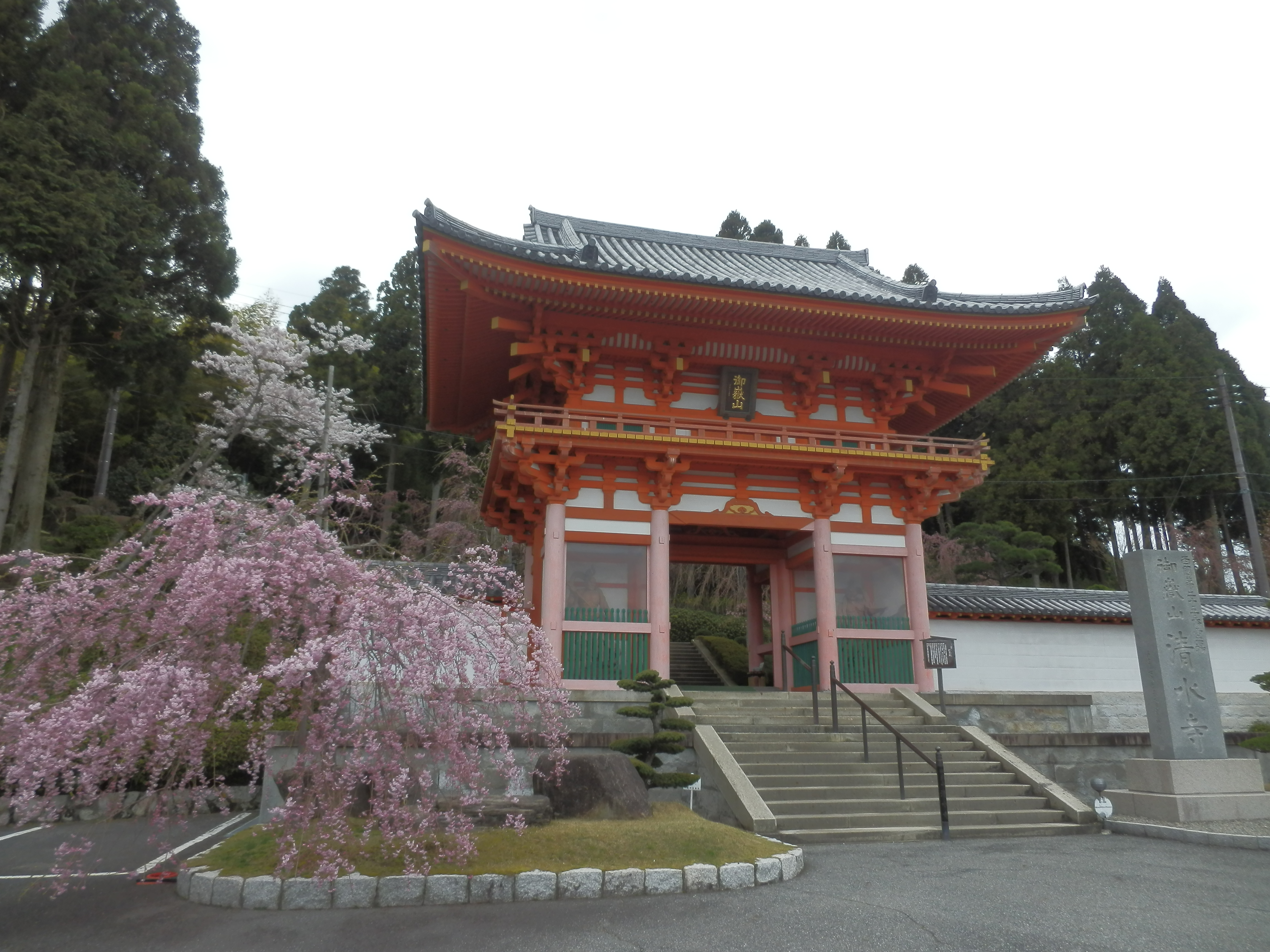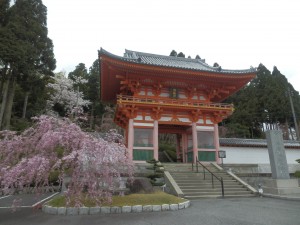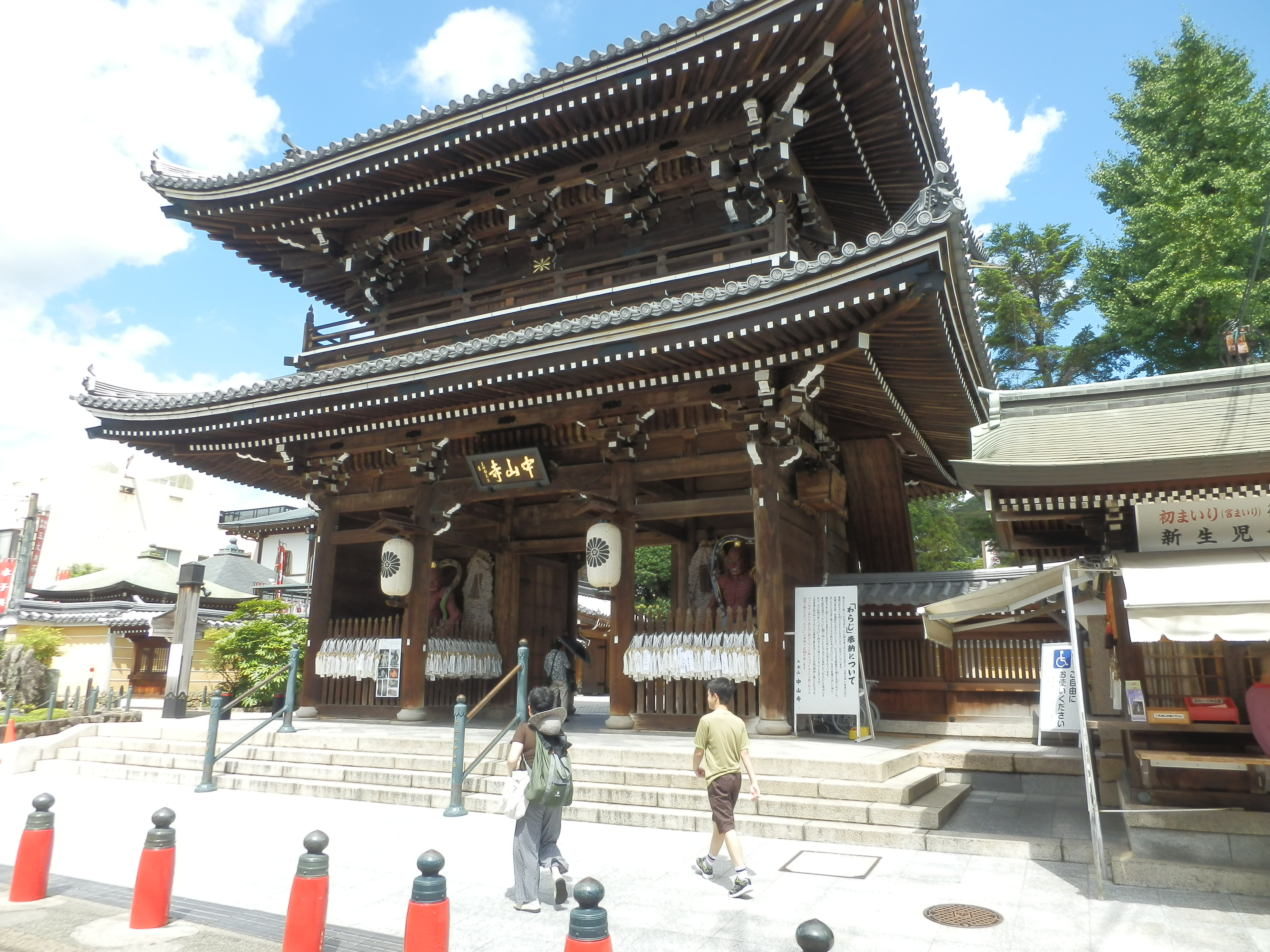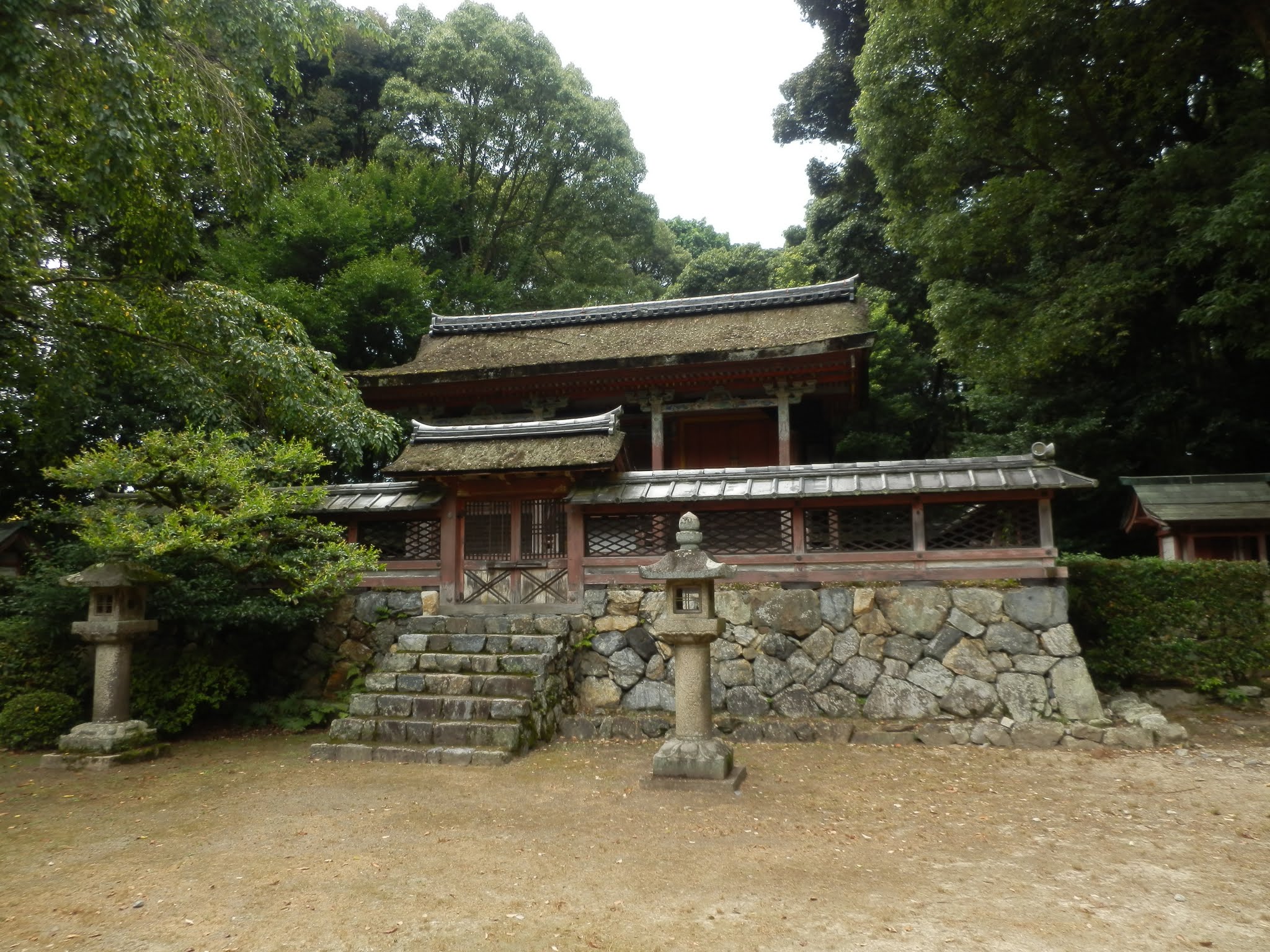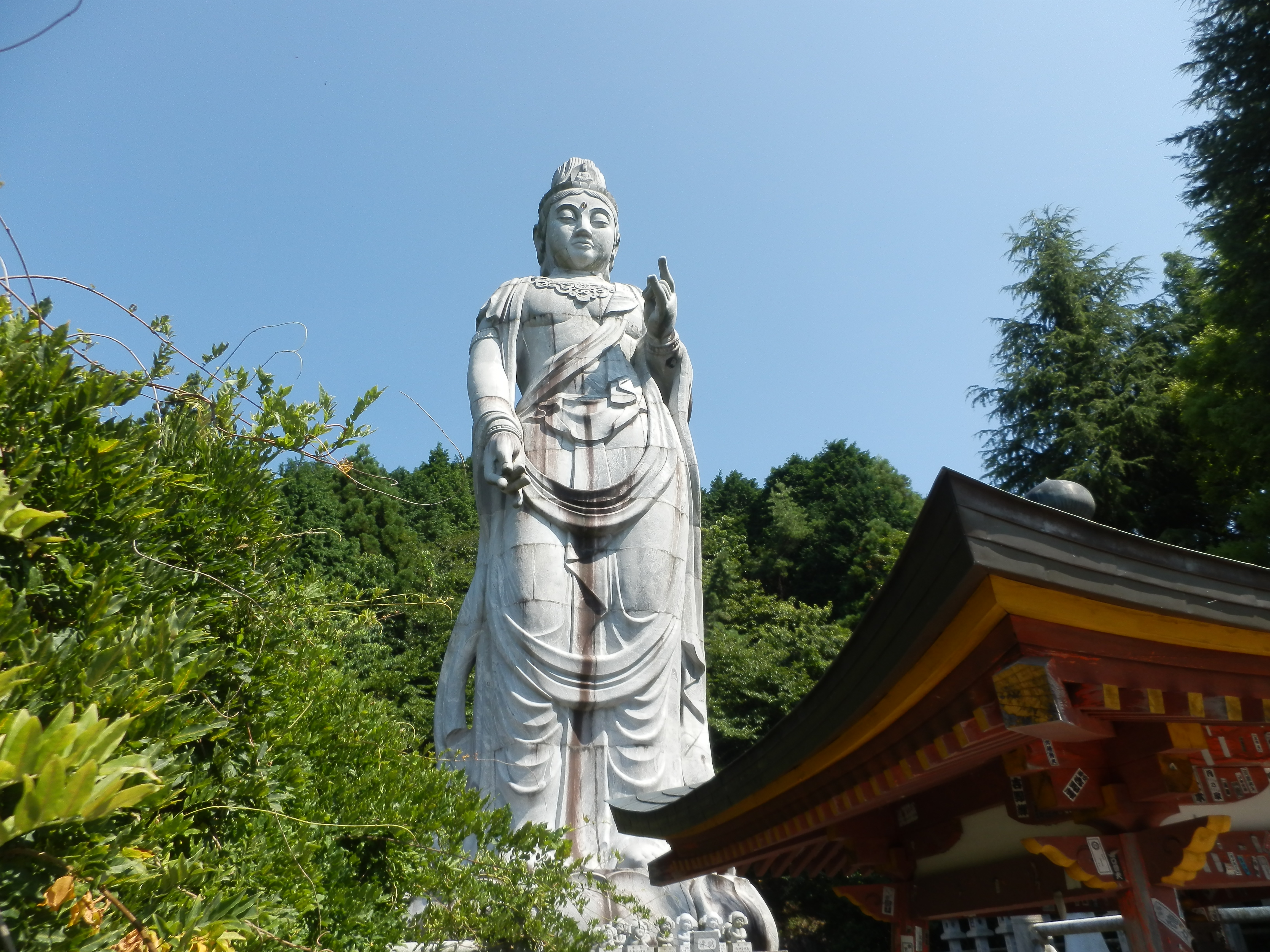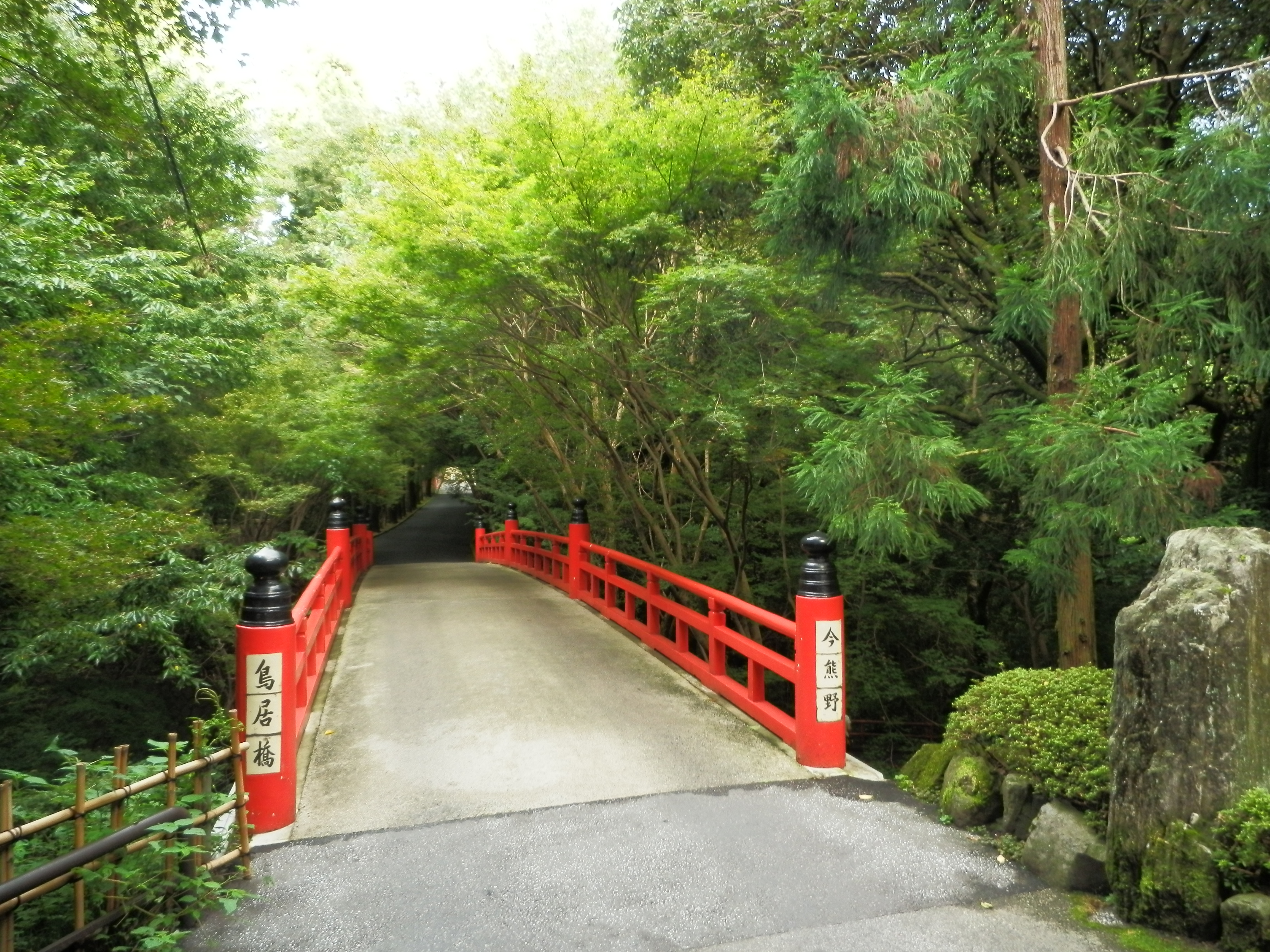Saigoku Kannon Pilgrimage: Kiyomizudera
If you haven’t been to your first temple of the new year yet, consider giving Kiyomizudera a try! And I don’t even mean the one in Kyoto, though that it also part of our pilgrimage.  Banshu Kiyomizu-dera, or “Kiyomizudera II†(as it is the second of that name on the pilgrimage) is temple 25 of the 33 on the route, and is located in Kato city, in Hyogo.
Like most of the temples you’ll see, it boasts a better set of scenery in spring or autumn than it will in the winter time, with a healthy share of beautiful sakura for that spring blooming season, but that doesn’t mean it doesn’t have a certain charm that transcends these kinds of photo shoot opportunities. There is also a moon viewing pavilion and several paths lined with different kinds of flowers.
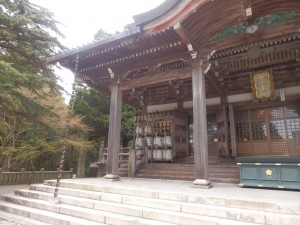 Kiyomizu-dera has two important statues of Kannon. In the daikodo, or main hall, there is the thousand-armed (Senju) statue. Further up the hill is the Konponchudo, where there is another statue of eleven-faced (juichimen) Kannon, connected with health and peace within the household. On the day of our visit, the Konponchudo was utterly quiet and perfect for contemplation. In this hall, there is a wooden carving of Kannon that sits before the space where the sacred and secret (not open to view) image of Kannon is housed.
Kiyomizu-dera has two important statues of Kannon. In the daikodo, or main hall, there is the thousand-armed (Senju) statue. Further up the hill is the Konponchudo, where there is another statue of eleven-faced (juichimen) Kannon, connected with health and peace within the household. On the day of our visit, the Konponchudo was utterly quiet and perfect for contemplation. In this hall, there is a wooden carving of Kannon that sits before the space where the sacred and secret (not open to view) image of Kannon is housed.
Between these two halls to the right of the stairway is the Jizodo, which was ringing with frog songs upon our visit, dispelling the usually somewhat somber feel of a place dedicated to Jizo as guide of “water-babies,†or those who died unborn. The bell tower is off this same stair path but to the left, housing the bell of ‘good fortune,’ and you are permitted to ring it.
Somewhat behind and to the left of the Komponchudo is the sacred well that gives the temple its name, “Kiyomizu†(清水) meaning clear or pure water. The story goes that a hermit prayed for access to water, and a miraculous spring came up in this location. As clean water is a prerequisite for establishing any place for human visiting or habitation, the discovery of this spring is the reason for the temple’s existence.
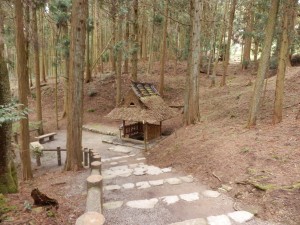
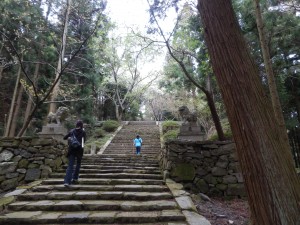 The hiking trail up to the temple is well marked, stocked with “free rental sticks†and provides  a nice walk, giving you time for forest contemplation, if not just a way to feel connected with past pilgrims who did the entire route on foot. It leads to a wide stairway just beneath the main hall and pilgrim office where you can get your pilgrim book stamped.
The hiking trail up to the temple is well marked, stocked with “free rental sticks†and provides  a nice walk, giving you time for forest contemplation, if not just a way to feel connected with past pilgrims who did the entire route on foot. It leads to a wide stairway just beneath the main hall and pilgrim office where you can get your pilgrim book stamped.
Many of the buildings on the temple site have been destroyed by fire or typhoon in the past and rebuilt at various times. The Niomon gate once stood near the walking trail entrance, and you can still see where it stood until it was destroyed by fire. The newer gate, with its fierce guardian statues, is now located next to the parking entrance.
Kiyomizu-dera is quiet and out of the way, but it is very well kept. Some of the funding for this comes from the fact that some of the surrounding space held by the temple has been leased as golf course space; you can see some the golf course from in front of the Komponchodo.
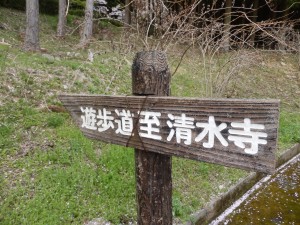 As it’s located off in the mountains of rural Hyogo, this Kiyomizu-dera takes some planning to get to. By public transportation, you want to take the train to Aino Station(相野駅) on the Takarazuka Line, then get a Shinki bus on the Fukuchiyama (ç¦çŸ¥å±±) line, and alight at the Kiyomizu-dera stop after spending about 45 minutes on board the bus. You’ll notice that Aino station feels a bit like the middle of nowhere, and its bus schedule behaves accordingly: as of now, there are two buses a day heading toward the mountain temple (one at 10:20, one at 12:50), and two heading back to the station (12:10 and 14:50). Check http://navi.shinkibus.jp/snk/unkoh for more bus info.
As it’s located off in the mountains of rural Hyogo, this Kiyomizu-dera takes some planning to get to. By public transportation, you want to take the train to Aino Station(相野駅) on the Takarazuka Line, then get a Shinki bus on the Fukuchiyama (ç¦çŸ¥å±±) line, and alight at the Kiyomizu-dera stop after spending about 45 minutes on board the bus. You’ll notice that Aino station feels a bit like the middle of nowhere, and its bus schedule behaves accordingly: as of now, there are two buses a day heading toward the mountain temple (one at 10:20, one at 12:50), and two heading back to the station (12:10 and 14:50). Check http://navi.shinkibus.jp/snk/unkoh for more bus info.
Access by car is a more flexible option, though if you’re using a smart phone as navi, it always pays to write down directions ahead of time, too, just in case you end up losing service along the way into the rural mountains of Japan. Parking is free, and you can choose between the lower parking (to take the walking trail up the mountain) and the upper, near the Niomon gate.
Enjoy your travels!
Map of the temple grounds (Japanese): http://kiyomizudera.net/k_map_top.html
Personal blog entry on visit to Kiyomizu-dera: http://eminihonde.blogspot.com/2012/05/kiyomizu-dera-other-one.html
A few more photos that give a good feel of the place: http://www.taleofgenji.org/kiyomizudera_hyogo.html
